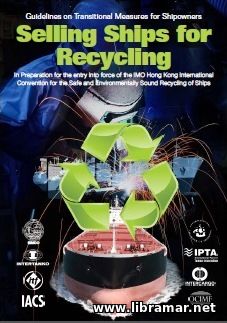 The process recycling of ships is definitely considered a "green" industry, employing a really large workforce in numerous developing countries. The vast majority of facilities dealing with the ship recycling are located in Asia. As a result of the recycling process, vessels reaching the end of their working cycle, are treated so that there is next to nothing remaining to go as waste.
However, it shall be noted that, while the declared principles of recycling the ships may be quite sound, the existing working practices and environmental standards that are there is some of the recycling facilities may sometimes fall short of the standards that are acceptable internationally. The present publication was developed by the IWG, i.e. Industry Working Group, with the intention to get periodically updated in order to be kept fully in line with the relevant IMO standards that are implemented by the contracting governments on a regular basis.
The updated editions of the publication are also supposed to take into consideration the practical experience that is gained. It should also be taken into account that the all responsibility for conditions of recycling the ships always rests solely with the authorities of the countries where subject vessels are actually located.
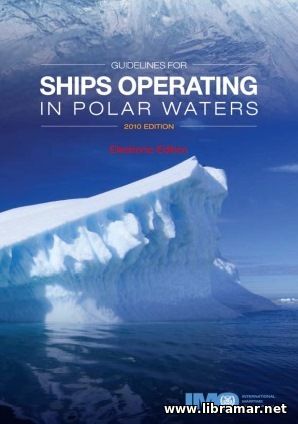 All vessels operating in the Antarctic and Arctic areas are usually exposed to a number of quite unique risks. The mariners are usually faced with the serious challenges posed by the harsh weather conditions, problems with establishing good communication, lack of good navigation charts, and others. In addition, the rescue and clean-up operations are usually very complicated and costly because of the geographical remoteness of the subject areas.
The cold temperatures natural for those areas reduce the working effectiveness of various components of the vessel, from sea suctions to deck machinery arrangements. We also have to take the ice in consideration, since its presents can also add some loads on the ship's hull, propulsion and hull appendages. The present IMO Guidelines address all above stated additional provisions that are definitely required to be considered beyond the existing regular requirements outlines in SOLAS/MARPOL Conventions, with the intention to cover the climatic conditions encountered in polar waters and also meet applicable standards of both safety and prevention of the marine pollution.
The guidelines provided in this document are recommendatory. The content of the volume is arranged in four parts covering the construction provisions, equipment, operational matters, and environmental protection and damage control issues.
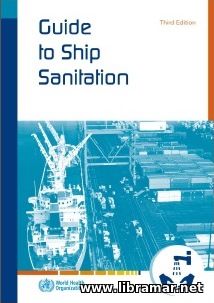 This paper has been worked out and officially issued by WHO, standing for the "World Health Organization" in Geneve, Switzerland in 2011. In consists of list of acronyms and abbreviations, introduction and eight main chapters, that are followed by Annex and Glossary.
The first part - Introduction - is the opening one and it will provide the readers with some quite valuable general information concerning the structure of the present document, harmonization with International Health Regulations, ILO and IMO, describes roles and responsibilities of master, designer, constructor and other members of the marine industry.
The major chapters of the main body of this document address water, food, recreational water environments, ballast water and waste management/disposal, vector as well as reservoir control, plus controlling infectious diseases in the environment. The Annex at the end on the Guide contains various examples of hazards, monitoring procedures, control measures and corrective actions for the water supply system of the ship.
The Glossary is provided for easy reference and familiarization with the technical terminology that has been used throughout the paper. A definitely useful and very practical publication to be possessed on board for those willing to get their vessel duly maintained and in full accordance with all relevant regulations.
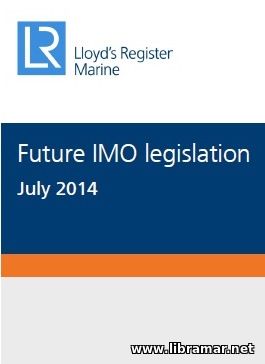 The present publication has been worked out by the team of professionals and released by Lloyd's Register of Shipping, one of the world's leading classification societies with their ultimate declared purpose to provide all participants of today's shipping industry together with all interested readers in general with a brief overview of the amendments already made or proposed to be made to the existing statutory instruments and regulations, which are considered mandatory under international conventions and codes.
It starts with four tables providing the data about the mandatory regulatory amendments that have already been adopted and are now entering into force, and likely regulatory amendments that are still in the phase of development and discussion and may be subject to further change prior to their adoption - and these tables cover both new and existing vessels. The text part of the document is divided in two major parts. The first part of the volume is dealing with the future IMO legislation that has already been adopted, while the second part of it has been mainly dedicated to the requirements of IMO currently being developed. A needful document for those who are really willing to be up-to-date with the very latest and proposed marine regulations thus recommended for familiarization.
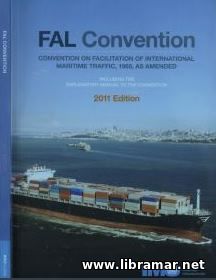 You are hereby offered to have a look into the consolidated edition of the so-called "FAL Convention" that includes all latest amendments that have been already officially adopted in the course of the thirty-fifth session of the associated FAL Committee with the proposed entry-into-force date of May 2010. The amendments include the ones directly relating to the arrival/departure of the vessels, arrival/departure of persons and various relevant forms.
In addition to that, the Explanatory Manual has also been included in this volume with the intention to provide all required assistance in proper interpretation of the legal text of all provisions of the above mentioned Convention that are commonly quite complex at usually not that easy to understand. The main and most important of the declared objectives of the Convention was to facilitate the marine transportation by means of minimizing the associated formalities as well as all documentary requirements/procedure that are usually associated with the ship's the arrival/departure - this applies to the international voyages.
Apart from the main content of the Convention, the Annex to it provides the rules that shall be followed for simplifying the above stated documentary formalities etc. This is one of the publications that are definitely required to be carried on board of any vessel involved in the international trade.
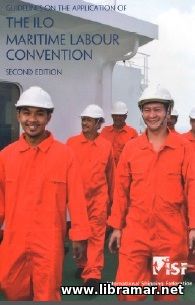 Here is the second updated edition of the guidelines which was released with the intention to assist interested persons with proper application of all provisions outlined in the ILO Convention issued by the ISF organization, standing for the International Shipping Federation. The initial release of the present publication was issued years ago, shortly after the MLC Convention was adopted, and it was actually aimed to introduce all ship operators to their obligations under the newly established regime.
The huge amount of work has been carried out by the several working groups consisting of the professional unions of the seafarers, governmental authorities, national associations of the ship owners - all to ensure that all parties involved are fully understanding their responsibilities. The current second release of the guidebook has therefore been quite significantly updated in order to reflect all latest clarifications from the ILO Convention. The authors have also added some supplementary guidance to the main content of the book to assist the maritime employers with the application of the ILO standards in the efficient and practical manner.
The authors of the volume strongly hope that it will be found very useful and practical by the workers of the shipping companies preparing for the MLC implementation by the contracting governments...
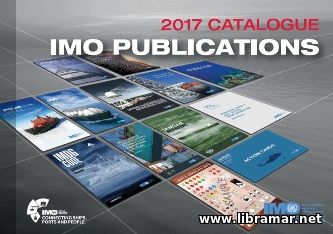 This release of the document was officially published by IMO Publishing this year and is actually the latest available. For more convenient and easy use, all IMO publications covered within this volume have been categorized and put in different chapters, addressing maritime safety, basic IMO documents and resolutions, cargoes, legal matters, facilitation of travel and transport, prevention of marine pollution from ships, navigation and rescue, marine technology, IMO model courses, e-reader files and electronic books.
The present volume will be of use for persons involved in purchasing of the IMO issued publications. The very last section of the booklet is fully dedicated to the newly developed and implemented IMO Bookshelf software. This application enables it's users to view all electronic purchased publications in a single place and it also allows for easy search through all of them simultaneously.
Among the key features of this app are the availability of the installation without the access to the internet, multiple search facilities, the new option allowing to add your own annotations and bookmarks, resizing the text, printing etc. Definitely useful volume which must be possessed on board vessels and in the offices of the companies.
 The present official IMO publication is containing three basic and critically important regulatory instruments that are commonly used by the organization, directly dealing with the LSA, i.e. life-saving appliances. Those three instruments are the LSA Code, together with the Revised Recommendation of Testing of LSA, and, finally, the Code of Practice dealing with the prototype novel LSA.
The LSA Code was officially adopted during of the sixty-sixth session of the IMO MSC. The main objective of the document was to provide all participants of the shipping industry with the requirements that are applicable to the LSA commonly required y SOLAS Chapter III - this would typically include the personal LSA, for example lifebuoys and inflatable lifejackets, immersion/anti-exposure suits, various thermal protective aids, visual aids including pyrotechnics items, survival crafts including lifeboats, inflatable and rigid liferafts, rescue boats, various embarkation systems including MES, i.e. marine evacuation systems, linethrowers, general alarm and PA (public address) systems.
An absolutely must-have publication on board any vessel subject to compliance with the provisions that are outlined in the IMO SOLAS Convention. The crew members will have all required information related to all lifesaving appliances that they have or supposed to have on board their vessel.
« 1 2 ... 20 21 22 23 24 25 » |







